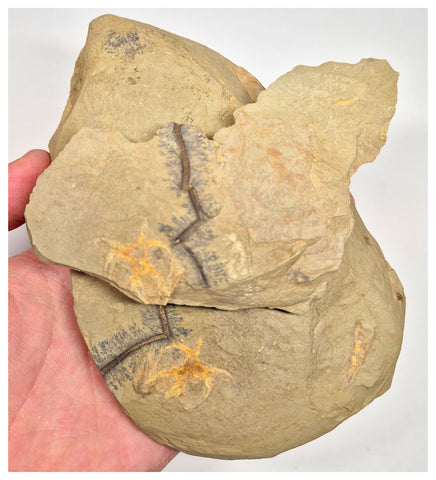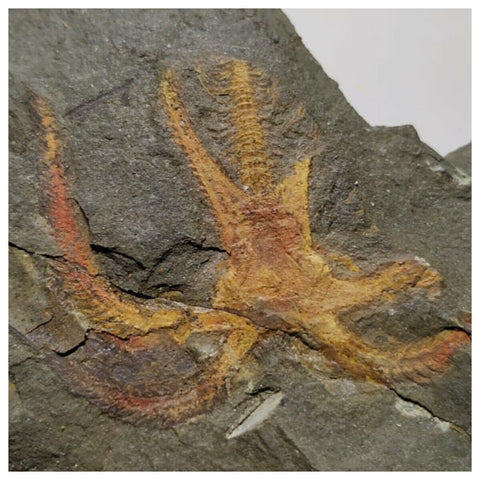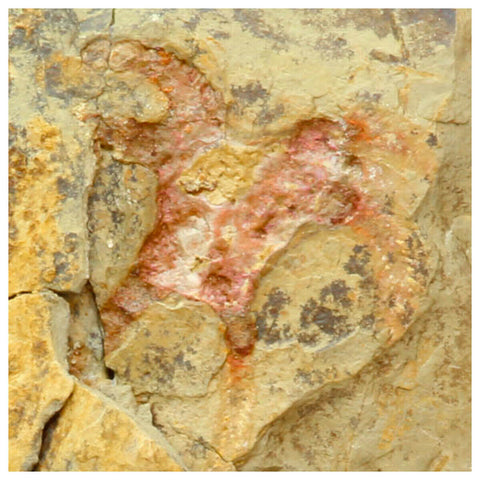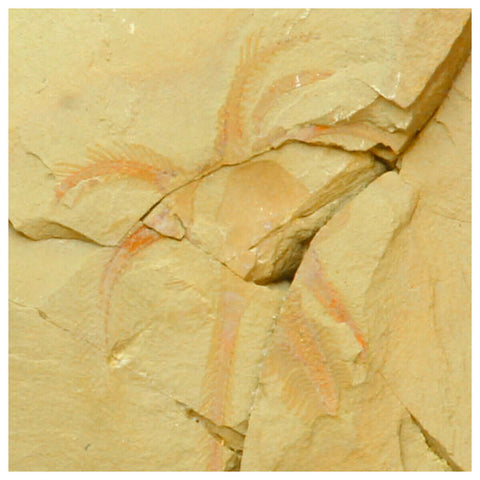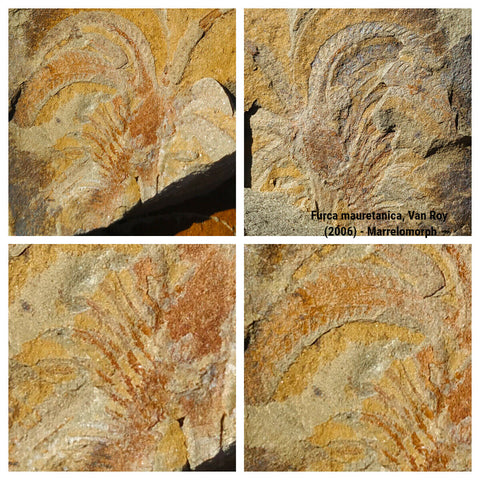Marrelomorph arthropods
Marrellomorphs are a group of arthropods known from the Cambrian to the Early Devonian. They lacked mineralised hard parts, so are only known from areas of exceptional preservation, limiting their fossil distribution.
We present here a magnificent collection of fossils of this group, from the Lagestatte of Fezouata Formation, from the Lower Ordovician.
Mainly of the rare genus Furca: The marrellomorph Furca (Van
Roy 2006; Van Roy et al. 2010; Rak et al. 2012). This non-biomineralized
taxon was first described by Fritsch (1908a,b) on the basis of isolated head shields from the Sandbian of the Letná Formation in the Czech Republic. Fritsch (1908a,b) interpreted the fossils as crinoid larvae, but later Perner (1919) suggested a marrellomorph affinity for the fossils, a view also followed by Chlupáč (1999a,b).
However, in the absence of the rest of the body, lingering doubts
over the affinities of Furca remained (Chlupác 1999a,b), until exquisitely
preserved complete specimens were discovered in the Fezouata biota (Van Roy 2006; Van Roy et al. 2010). Furca shares the head shield morphology of marrellids, with three pairs of curved projections bearing marginal spines. These marginal spines are more pronounced than in the middle Cambrian Marrella splendens from the Burgess Shale, and closer in size to those of the Early Devonian genus Mimetaster hexagonalis. The appendages show similarities to
those of both M. splendens and M. hexagonalis. Mimetaster hexagonalis and Marrella have long been regarded as closely related (Stürmer & Bergström 1976; Bartels et al. 1998; Kühl & Rust 2010).



